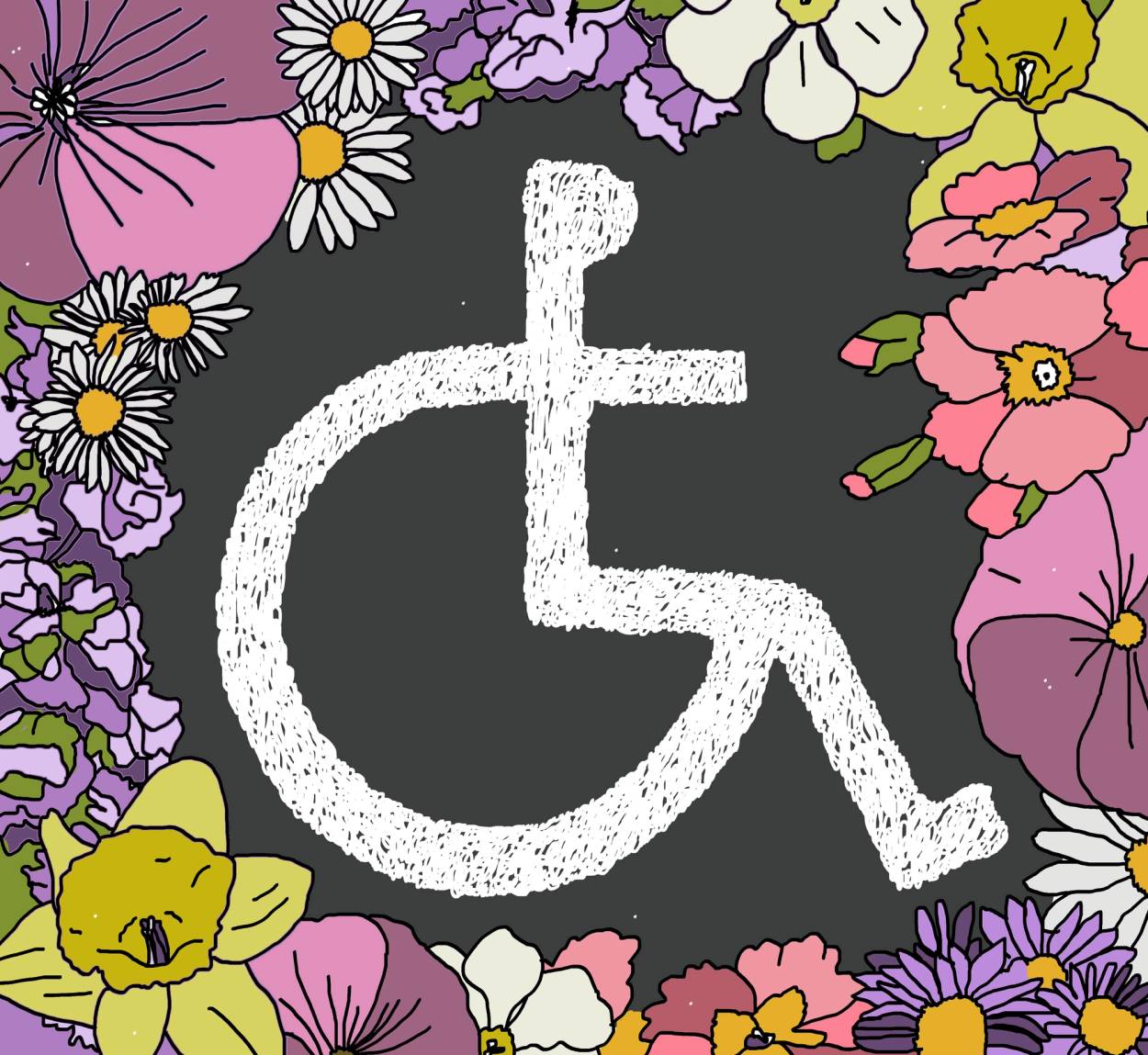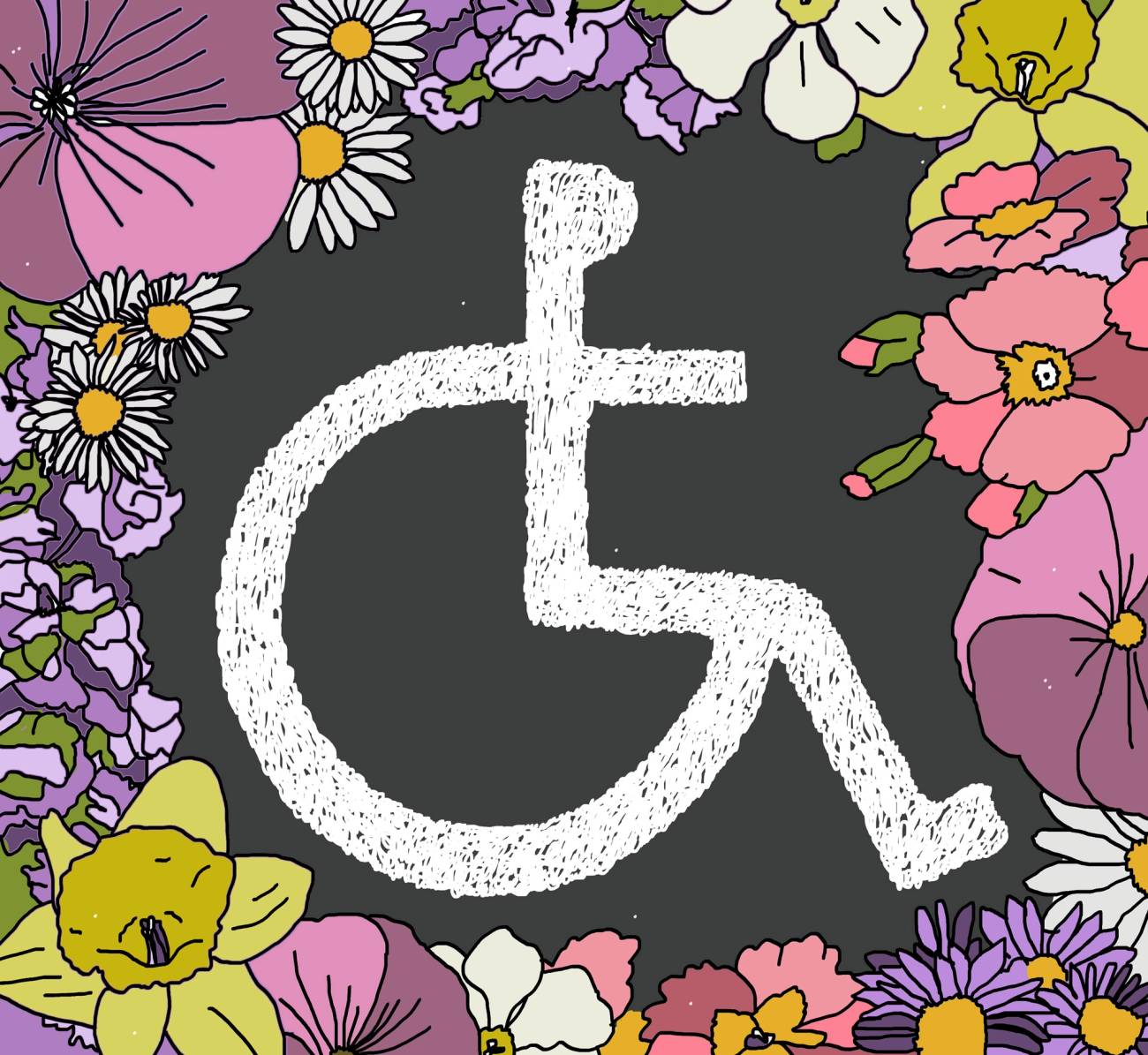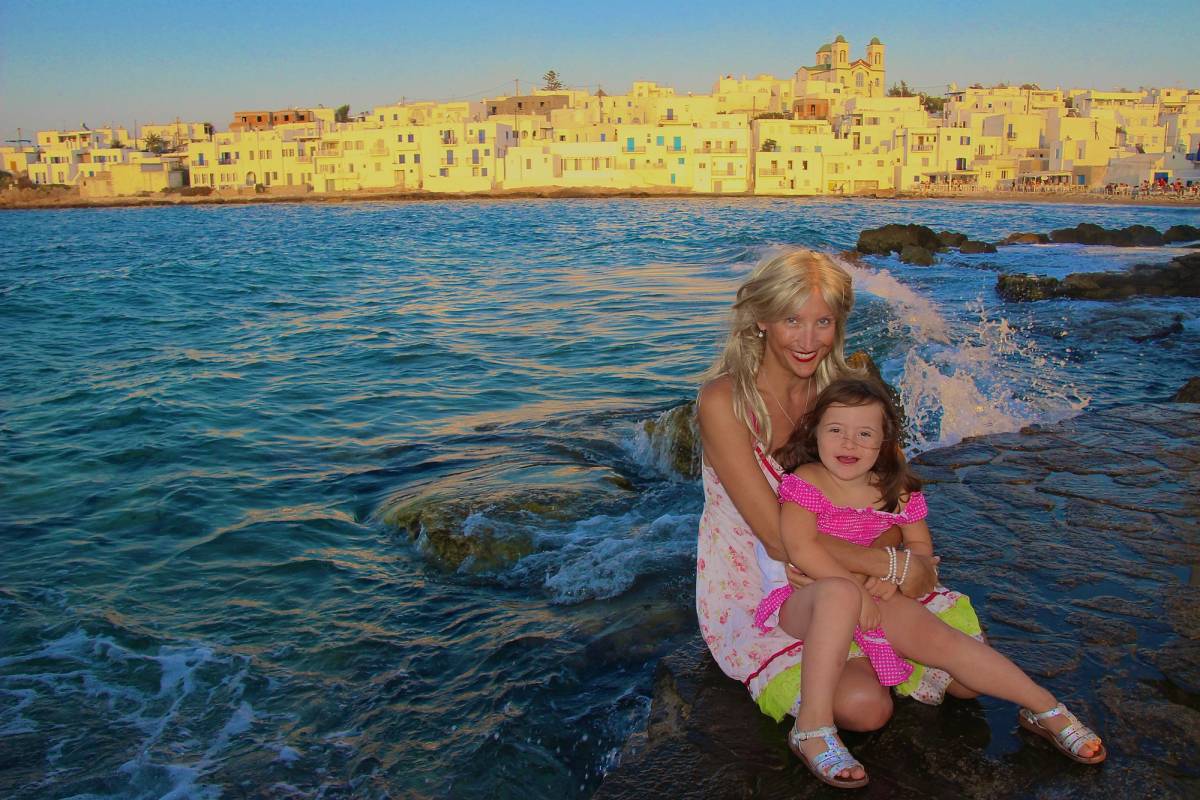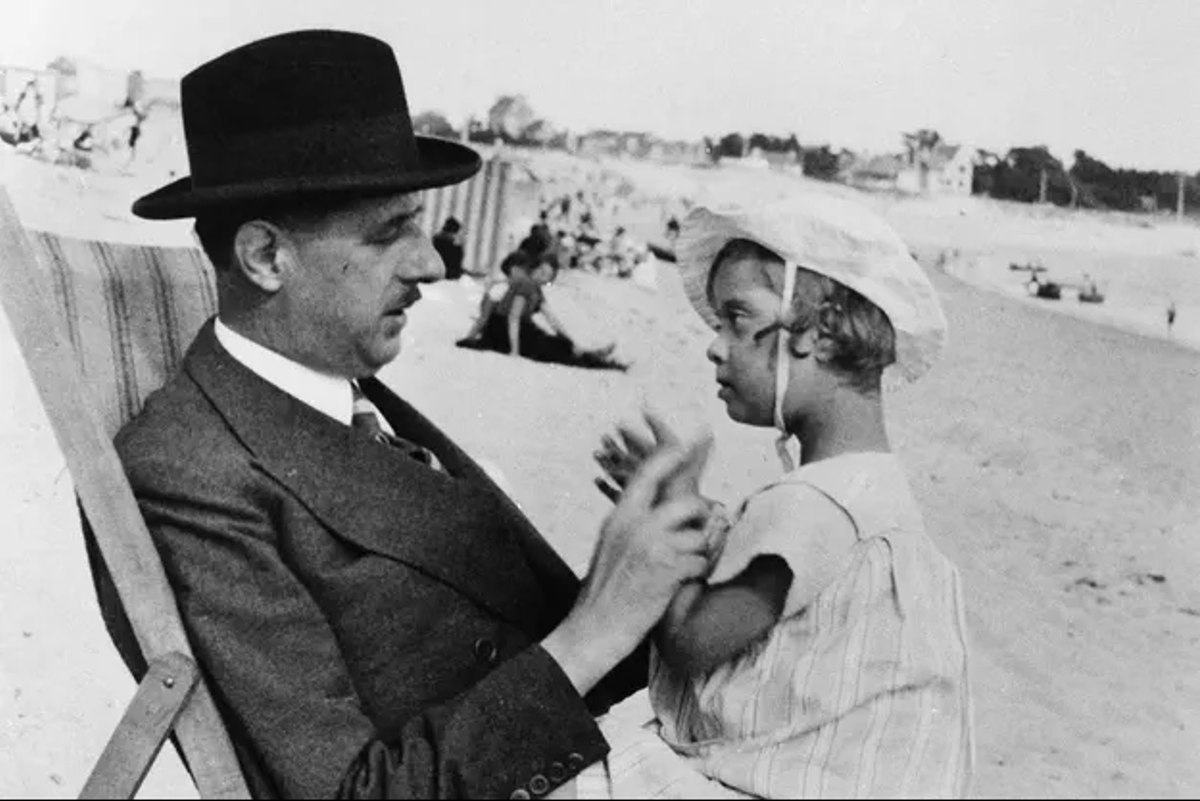Jennifer Natalya Fink’s Disabilities
Writing about the disabled is a chance for celebration, not a story of victimhood or a political program




Jennifer Natalya Fink’s heart is in the right place. When her daughter Nadia was diagnosed with nonspeaking autism at the age of 2 1/2, she felt at first like “a blunt object had hit us ... our family felt flayed.” Self-identified as a “crip-queer” Jewish feminist, Fink, however, was not one to wallow in this latest experience of separation from the supposedly normal, happy, “able” lives of others. Instead, the event galvanized her to reach back and explore the history of disability in her family in order to turn her personal grief into a sometimes engaging history.
Her findings, alas, are not surprising. Disabled people are routinely erased from family history; they are magically discounted, disappeared, and airbrushed from the stories a family tells itself about itself. Fink’s investigations turned up various horror stories: When her paternal aunt gave birth, in 1972, to a little boy with Down syndrome, she refused so much as to look him in the eye. “Take him away,” is all the aunt said, and taken away he was—and institutionalized. No records could be found of his life or death. The only name Fink could find for him was “Baby XY.”
But not so for another Fink family member with Down syndrome—cousin Rhona who joined the world in 1946, almost two decades before the unnamed other cousin. Born in Scotland, she was lodged temporarily with her biological family before being institutionalized in a group home for disabled Jewish children that her mother had helped found. Rhona lived until the age of 36 and apparently had a comparatively happy life, as the interviews Fink conducted with her caretaker at the Jewish group home suggest.
As the mother of a little girl with an unusually severe case of Down syndrome, I am a prime audience for Fink’s work. And I was looking forward to it for another reason, as well. The author of four well-received novels—Burn, V, Mikvah Queen, and Bhopal Dance—Bhopal Dance, winner of FC2’s Catherine Doctorow Innovative Fiction Prize, abounds with provocative and politically incorrect passages like: “I hate all pets. And even more their owners, scooping poop, ootsie-wootSIE, fawning and foofing over hoofs and teeth that would, will, should devour said owner the moment she dies.”
This new work of nonfiction, alas, reeks of repetition, conformism and academic jargon, which acts at once to signal the author’s own virtue while distancing her and her readers from the people the book is ostensibly about. After every quotation that cites “his or her” (as opposed to “their”) she adds the pious parenthetical “(sic)” as though to express her outrage with earlier and less PC writers. The number of times she invokes, “ableism,” “racism,” “sexism,” “homo-phobia,” “heteronormativity,” “queer,” and “crip” theory (for those not in the know this means the theory of disabled people) defies belief. The jargon is leavened with a kitschy overuse of the Yiddish word “mishpacha” (curiously in modern Hebrew phonetic transliteration, sic). On the very same page (say, page 149) she will say, “I’ve made many in my family uncomfortable with my insistence on including in our own mishpacha my queer, disabled, interracial family,” and, a few lines later, “We can ask about disability lineage: who counts as everyone in our michpacha …?”
Fink is a professor of disability studies at Georgetown University with a doctorate in performance. She knows how to write—and also seems to know how to write badly— for particular audiences. Something is clearly being performed in All Our Families, beyond the book’s simple argumentation that we should not exile disabled people from family narratives or lock them up in bad places and never visit.
As far as this performance goes, it is interesting to speculate on the need of writers, especially certain white writers to insulate themselves from a politically driven culture that celebrates the supposed virtue conferred by certain externally assigned group identities while heaping opprobrium on others. Seeking to define one’s own selfhood based on family relationships to a disabled person, as opposed to telling that person’s own story as best one can, is a form of self-armoring (conceivably at someone else’s expense) that is interpersonally icky. At the same time, its appeal at this moment to otherwise (inherently) “privileged” white authors seems obvious.
My daughter, unlike Fink’s autistic daughter, will never have “the exceptional ability in math, extraordinary poetry, or college-level work in chemistry” that Fink informs us her daughter Nadia has. My daughter cannot even speak her own name. (Admittedly, it is hard: Eurydice—Yur-i-di-see—she pronounces it as “Izzy.”) At 14 years of age, she does not read, write, count, or—basically—speak. She loves hurdling off onto the street and not responding to calls. She still wears diapers at night. And yet. And yet.
And yet, Eurydice is unadulterated joy. She has the finest disposition of anyone I have ever met—she laughs and smiles and high fives; she kisses me on the mouth if I don’t turn my face demurely to the side; she is interested in everything and game for anything. As my own Germanic ancestors would say “you could steal horses with her.” She is up for every adventure you can imagine. A tour of the Louvre or a hitchhiked ride on the back of a Tunisian pickup truck. A clandestine midnight visit to an abandoned ocean liner in the south of France or an unexpected night in the house of a Mafioso off the shore of Naples. I was a travel writer for a good part of Eurydice’s childhood so, as a single mother, I took her with me wherever I went. And she was not only the best of company but—nonverbal as she is—a fabulous conversation starter.
I wish I learned these sorts of things about Nadia. But we learn little about her in the course of her mother’s narrative—except for said aptitude for chemistry, math, and verse, which leads a reader to conclude that, for the purposes of this performance, anyway, Fink is more interested in recognizing and honoring the “lineage” of her dead disabled relatives than being with her living daughter. And while I agree with her that erasing disabled people from your life and history—or anyone’s life and history—is a reprehensible thing, fetishizing disability as she does seems to me almost equally silly. In her characteristically clotted language, she declares, “Crip pride activists offer a more politicized sense of how to resignify and expand notions of disability. They instead suggest that, just as LGBTQ+ people have expanded the category of “gay” to include basically any sexual identity besides straight and have embraced the derogatory umbrella term “queer” as a rallying political cry of pride, disabled people should expand the category and reclaim “crip.”
Theorizing people and larding them over with politicized language made up of righteous-sounding acronyms is a pretty obvious way of declaring one’s own virtue while distancing oneself from the physical, everyday lives of people whose reality is often messy and contradictory, and can prompt less than noble feelings as well as actions. Fink seems almost overeager to avoid this kind of thinking and feeling, which pretty much defines—or defined—the qualities that make for good writing in a literary frame. The book is assembled out of sentences like this: “The entwining of care work in racist, anti-immigrant, classist, and misogynistic systems of oppression is the result of the dismantling of the institutionalized care system without a similar dismantling of the ableism that underwrote it.”
At the end of her book, Fink offers some bullet points about how to uncover disabled ancestors on your genetic family tree: Search family photos for persons you can’t identify, she recommends (“Who’s missing? Who do you not recognize in a family photo? Ask questions about people who might be relatives who appear in family records, photos, and videos and note any disappearances”); aggressively query your relations about everything from deafness to dyslexia; seek out those persons, young and old, who had disabilities so you can form a “proud tradition” of disabled family.

But disability should not be the only way we define anybody—just as it should not be the reason we exclude anybody. My daughter is not her charismatic, beautiful, winsome self because she has Down syndrome any more than she is her charismatic, beautiful, winsome self in spite of the fact that she has Down syndrome. “I am large,” says Walt Whitman, “I contain multitudes”: We contain a multitude of reasons for being who we are. To single out disability—as a liability or an asset—is equally and repulsively reductive.
In a humane world, we would consider disabilities a part of life—as Fink notes, 1 in 5 children have some disability or another (though I wonder about the expansiveness of her definition and who that definition really serves). In old age—if we are lucky enough to achieve it—most of us are likely to develop more than one disability. Disabilities are simply part of the color and contour, the warp and weft of being human. They ought neither to turn us into pariahs nor into saints; they ought simply to exist in our spacious bodyminds, to appropriate another term Fink uses with metronomic regularity.
Fink also, importantly, addresses the matter of care: Who cares for whom and how. The term BIPOC (Black, Indigenous, and people of color) recurs incessantly in her narrative; BIPOC, she says, are, almost always, the underpaid persons who end up taking care of the white, privileged disabled population. Of course, I fully assent to these people—and all persons whom we hire to help us care for our disabled cousins or children or aunts or uncles—being paid a good, a respectable, a living wage. I myself hire a babysitter whom I recompense as fully as my writerly income will possibly allow and who works miracles with my child.
Fink obsesses about child care and her own status as “White, middle-class, Jewish, queer, not disabled, I benefit from all the hidden violence against BIPOC (Black, Indigenous, and people of color) people that constitutes white privilege—and from the ableism woven into how we produce raced bodies.” (p. xii) However, without giving details she tells us that she and her unnamed Asian American partner, due to their white-collar jobs, were able to share work in “an ungendered way.” They become heroes. “Our own positionality felt unprecedented and unrecognizable. Where were we in this deeply racist, misogynist, and heterosexist story?”
Fink also talks pointedly of the absence of men at a number of the disability meetings she attends—the assumption that a kid is a woman’s job—which certainly resonates with me. Eurydice’s father abandoned her at birth. He dearly wanted children with me but not disabled children, it turned out. When he discovered that Eurydice had Down syndrome he fled instantly. He failed to sign a single paper confirming his paternity in the French hospital where Eurydice was born. A Greek man, he escaped to the island of Crete where I have never had his phone number, address, or any further contact information.
That is not, however, the story of all European fathers with Down syndrome children. Indeed the most famous—and arguably the toughest, roughest, most masculine—man of France, General/President Charles de Gaulle, had the most doting relationship possible with his little daughter Anne, who was born in 1928 with Down syndrome in Trier, Germany, where her father was stationed with the army of occupation in the Rhineland. Rather than being institutionalized as was the standard practice of the time, she remained at home with her parents and two older siblings.
The general—notorious for his lack of obvious affect—was by report exorbitantly tender, loving, and playful with Anne. Whenever his charged schedule permitted, he repaired to her bedside to sing her lullabies, he wandered hand-in-hand with her through the gardens of his estate at Colombey-les-Deux-Eglises, and performed pantomimes to amuse her. Apparently the only word Anne ever learned to speak clearly in her life was “Papa.” And a short life it was, for in 1948, at 20 years of age, Anne contracted pneumonia and died of it in the arms of her adoring father.
De Gaulle never got over Anne’s death, and he carried her framed portrait with her wherever he traveled. In fact, he credited her portrait with having saved his life during a famous assassination attempt in 1962 at Petit Clamart in the Hauts-de-Seine district. The president was sitting in the backseat of a chauffeured vehicle and the would-be assassin’s bullet, he maintained, struck the photograph of Anne and not him. Anne had become, in her father’s mind, the guardian saint of his life. Talk about not attempting to disappear a disabled person from your history!

But if de Gaulle so cherished his Down syndrome child, not every famous man did. America’s famous “voice of conscience,” the playwright Arthur Miller—who we might have expected to have been particularly sensitive to his challenged progeny—was, in fact, staggeringly brutal.
When Arthur Miller’s son and that of his third wife, photographer Inge Morath, was born with Down syndrome in either 1962 or 1966—we still do not know which—his father instantly (and against his spouse’s will) whisked him away into an institution. Southbury Training School—where Daniel spent much of his youth “was not a place you would want your dog to live,” according to Marcie Roth, now executive director and CEO of the World Institute on Disability, who worked there for a time. Overcrowded, understaffed, filthy, and chaotic, it was an appalling place for a child to grow up. Daniel’s mother visited him there every Sunday; Arthur Miller refused to accompany her even once.
Not only did he refuse to see his son but he excised Daniel entirely from his life story, mentioning him neither to close friends and family nor even in his “tell-all” 1987 memoir, Timebends. So invisible was Daniel that he did not even appear among the list of surviving children in his father’s obituary. This is the type of behavior from men that Fink rightfully condemns. But for the convenience of her argument, she ignores men who behaved and behave very differently indeed.
I am fortunate enough to have a devoted boyfriend and godfather to Eurydice who treasures her and spoils her. He only visits, albeit regularly: He works in Los Angeles while I live in Paris. This is because families and friends are necessary but not sufficient for disabled people to live their best lives. In France, Eurydice has always had a great deal of state support—at first free, high-quality day-care, then a special school, and always in the interim, a vacation center and a small monthly stipend for her disability. I am well aware that this is far more than I would have in the United States, and it’s part of the reason I remain in France.
Making decent care for disabled persons a public and widely available good is what the United States needs to work on—not the reification of “the disabled” as another special class or interest, but simply their practical, pedagogical, and financial support and the support of their families, whether their family consists of a small brood of enthusiastic relations or a single mother.
I am not for one moment pretending it is easy to raise a disabled child—much less to accompany (as I expect to do) a disabled adult. But you know what? Life with a handicapped child is full of surprises, delights, and beauties. Just as is (often enough) life with any child.
If one is to write, then, about these lives and our relationships with them, let it be more than a story of victimization, a list of bullet points for responsible behavior, or a subsection of a political program. Let us celebrate them as unique, resplendent, radiant, irreplicable, individual humans. Not irreplicable in main part because of their disabilities, but irreplicable because of their idiosyncrasies and—above all—because of their luminosities, which are theirs.
Cristina Nehring is an award-winning essayist, scholar, travel writer and memoirist known for her spirited and contrarian reflections.